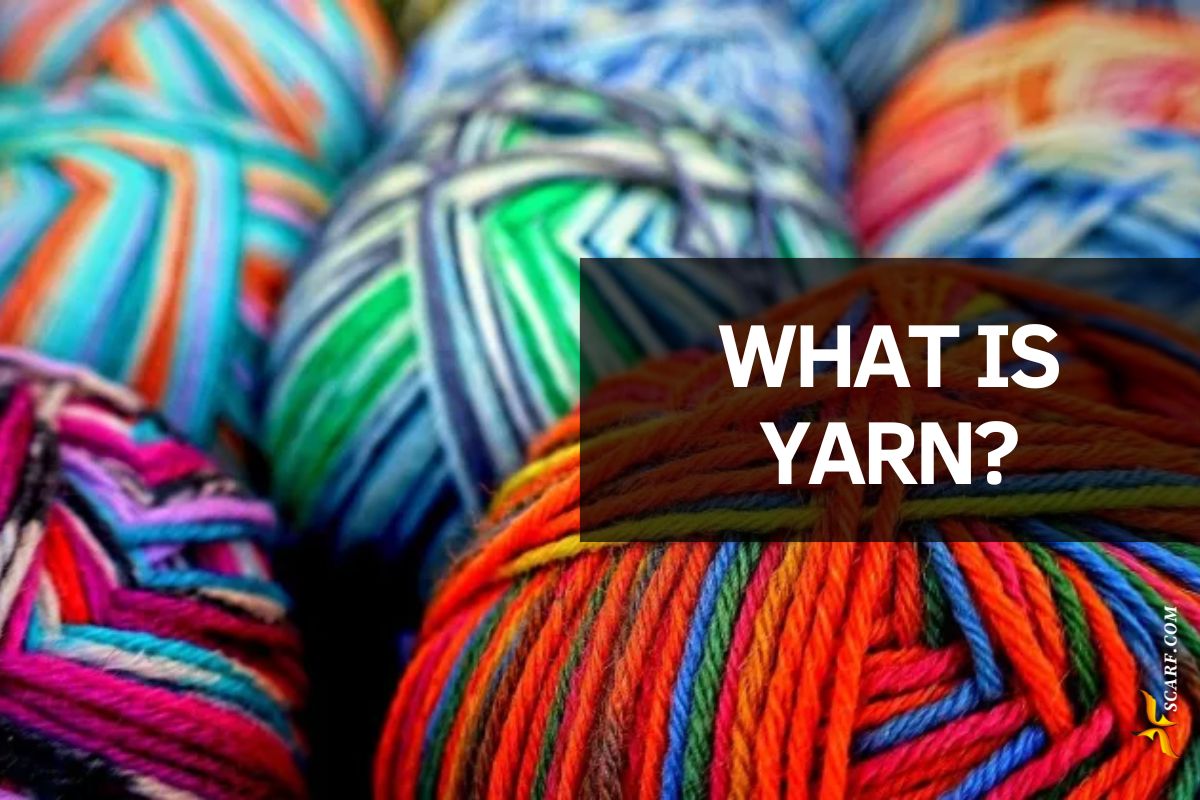Short answer
What is yarn? A long continuous length of interlocked fibres, suitable for use in the production of textiles, sewing, crocheting, knitting, weaving, embroidery, and ropemaking.
Yarn is the fundamental building block of textiles. It transforms single fibres into a strong, continuous strand through spinning.
This article explores yarn’s many forms—what it’s made of, how it’s used, and why it matters in our daily lives.
- Short answer
- What is Yarn? The Basics
- Different Types of Yarn
- Common Yarn Materials
- Main Uses of Yarn
- The Yarn Market and Industry
- Choosing the Right Yarn for Your Project
- Frequently Asked Questions (FAQs)
- 1. What is the simplest definition of yarn?
- 2. What is the difference between yarn and thread?
- 3. Which yarn is best for beginners?
- 4. What does ‘yarn weight’ mean?
- 5. What does it mean when yarn ‘pills’?
- 6. Is acrylic yarn a good alternative to wool?
- 7. What is a blended yarn?
- 8. How much yarn do I need for a project?
- 9. What are ‘special yarns’?
- 10. How should I store leftover yarn?
- 11. What is dk weight yarn?
- 12. What is fingering weight yarn?
- 13. What is a skein of yarn?
- 14. What is aran weight yarn?
- 15. What is sport weight yarn?
- 16. What is yarn made of?
- 17. What is acrylic yarn made of?
What is Yarn? The Basics
Yarn consists of fibres twisted or bonded into a continuous strand. These fibres may be natural like cotton or synthetic like acrylic. The twisting process, called spinning, gives yarn its strength.
Yarn thickness, known as weight, influences the final fabric. Thin yarns create delicate lace. Thick yarns produce cozy blankets.
Gauge matters too. It refers to stitches per inch. Matching gauge ensures your handmade items turn out the right size.
Different Types of Yarn
Yarn varies widely. Classification depends on thickness, structure, and purpose.
Yarn Weight Categories
Weight defines yarn thickness. It shapes the fabric’s look and feel.
- Fingering/Sport Weight: Delicate, ideal for socks.
- DK Weight: Versatile, perfect for sweaters.
- Bulky Weight: Thick and fast-knitting, great for winter accessories.
Special and Novelty Yarns
These yarns add texture and visual interest. They include slub, bouclé, or metallic varieties. Crafters use them for decorative projects.
Special yarns often require unique spinning techniques. They bring personality to fashion and home décor.
Technical Yarns
Technical yarns serve functional roles. They appear in medical textiles or automotive interiors.
Blends like acrylic-viscose offer durability and moisture control. Research continues into smart yarns for advanced applications.
Common Yarn Materials
The fibre content defines a yarn’s character. It influences softness, durability, and care.
Natural Fibers
Natural fibres come from plants or animals.
- Cotton: Breathable and soft. Perfect for summer wear.
- Wool: Warm and elastic. Merino wool feels especially gentle.
- Silk: Lustrous and strong. A luxury choice for special projects.
- Other Naturals: Alpaca, linen, and hemp each bring unique qualities.
Synthetic Fibers
Synthetic fibres are human-made.
- Acrylic: Lightweight and affordable. A popular wool alternative.
- Nylon: Adds strength to blends. Common in socks and activewear.
- Polyester: Wrinkle-resistant and durable.
Blended Fibers
Blends combine fibres to enhance performance. A wool-acrylic mix offers warmth and easy care. Cotton-polyester resists shrinking. Blended yarns balance cost and comfort.
Main Uses of Yarn
Yarn transforms into countless useful and beautiful items.
Apparel and Fashion
Yarn becomes the clothes we wear. Sweaters, scarves, and socks all start as yarn. Designers select yarn for drape, warmth, or stretch. The right yarn makes a garment functional and beautiful.
Home Textiles and Decor
Our homes are filled with yarn-based products. Curtains, upholstery, and blankets rely on durable, attractive yarn.
Carpets underfoot are dense yarn constructions. Yarn brings color and comfort into living spaces.
Crafts and Hobbies
Handcrafts connect people to tradition and creativity. Knitting and crocheting turn yarn into personal treasures.
Embroidery yarns add decorative touches to fabric. Every handmade gift carries the maker’s care.
Industrial Applications
Yarn serves practical roles beyond fashion. Ropes for sailing or construction use strong, twisted yarn.
Medical textiles may incorporate yarn for wound care. Automotive interiors use yarn in seat fabrics.
The Yarn Market and Industry
Yarn production is a global industry. Demand remains steady for both natural and synthetic types.
Blended yarns are growing in popularity. They meet needs for affordability and performance. Markets in Asia-Pacific and North America lead in consumption.
Choosing the Right Yarn for Your Project
Selecting yarn involves thoughtful consideration.
Consider the project’s purpose. A baby blanket needs soft, washable yarn. Outdoor items require durability.
Read the yarn label. It shows weight, fibre content, and care instructions. Matching yarn to pattern requirements prevents surprises.
Feel the yarn. Texture and softness affect the making experience. Enjoy choosing colors that bring joy.
Care for handmade items. Proper washing keeps them beautiful for years.
Frequently Asked Questions (FAQs)
1. What is the simplest definition of yarn?
Yarn is a long strand of twisted fibres used to make fabric or textile products.
2. What is the difference between yarn and thread?
Thread is a finer, stronger type of yarn, usually finished for sewing machines or hand stitching.
3. Which yarn is best for beginners?
Medium-weight acrylic or wool yarn is easiest to handle. It’s forgiving and widely available.
4. What does ‘yarn weight’ mean?
Yarn weight refers to thickness. Categories range from lace (finest) to jumbo (thickest).
5. What does it mean when yarn ‘pills’?
Pilling occurs when fibres loosen and form small balls on the fabric surface. It’s common with softer, shorter fibres.
6. Is acrylic yarn a good alternative to wool?
Yes. Acrylic is lightweight, machine-washable, and hypoallergenic. It lacks wool’s natural warmth but offers easy care.
7. What is a blended yarn?
Blended yarn combines different fibres (e.g., cotton and polyester) to maximize benefits like softness, strength, or cost.
8. How much yarn do I need for a project?
Patterns specify yardage. Always check the yarn label for length per skein. Buying extra ensures color match.
9. What are ‘special yarns’?
Special yarns have unique textures—like loops or bumps—created through specific spinning methods.
10. How should I store leftover yarn?
Keep yarn in a dry, dark place. Seal it in bags to protect from dust and moths.
11. What is dk weight yarn?
DK weight yarn is a medium-thickness yarn perfect for a wide range of projects. It’s ideal for sweaters, scarves, and blankets, working up faster than fine yarns but with more detail than bulky ones.
12. What is fingering weight yarn?
Fingering weight yarn is a fine, lightweight yarn often used for delicate projects like socks, lace shawls, and lightweight garments. It creates a detailed, drapey fabric.
13. What is a skein of yarn?
A skein is a specific, ready-to-use preparation of yarn, typically an oblong-shaped bundle that’s designed to be worked from directly without needing to roll it into a ball first.
14. What is aran weight yarn?
Aran weight yarn is a medium-to-heavy thickness yarn, slightly bulkier than DK but lighter than Chunky. It’s perfect for warm, textured sweaters, cozy blankets, and classic cable-knit patterns.
15. What is sport weight yarn?
Sport weight yarn is a light-weight yarn, slightly heavier than fingering but lighter than DK. It’s ideal for finer sweaters, baby clothes, and lightweight accessories that need a bit more warmth.
16. What is yarn made of?
Yarn is made from fibers that are spun together. These fibers can be natural (like wool, cotton, or silk) or synthetic (like acrylic or polyester). Blends combine both types.
17. What is acrylic yarn made of?
Acrylic yarn is made from a synthetic polymer called polyacrylonitrile. It’s a plastic-based fiber created through an industrial chemical process, designed to mimic the properties of natural wool.
We specialize in customizing scarves, hats, clothing and accessories. Please feel free to contact us.



